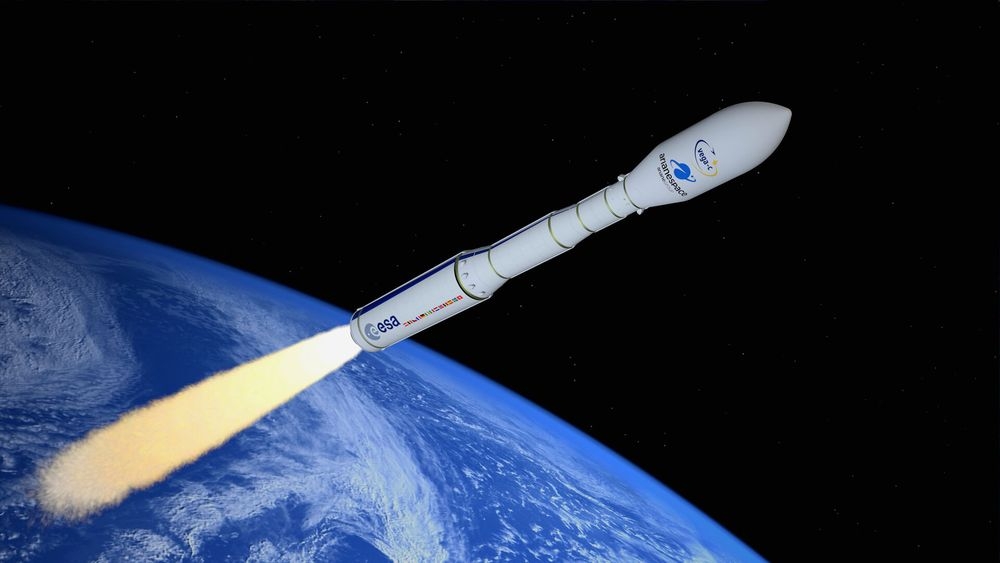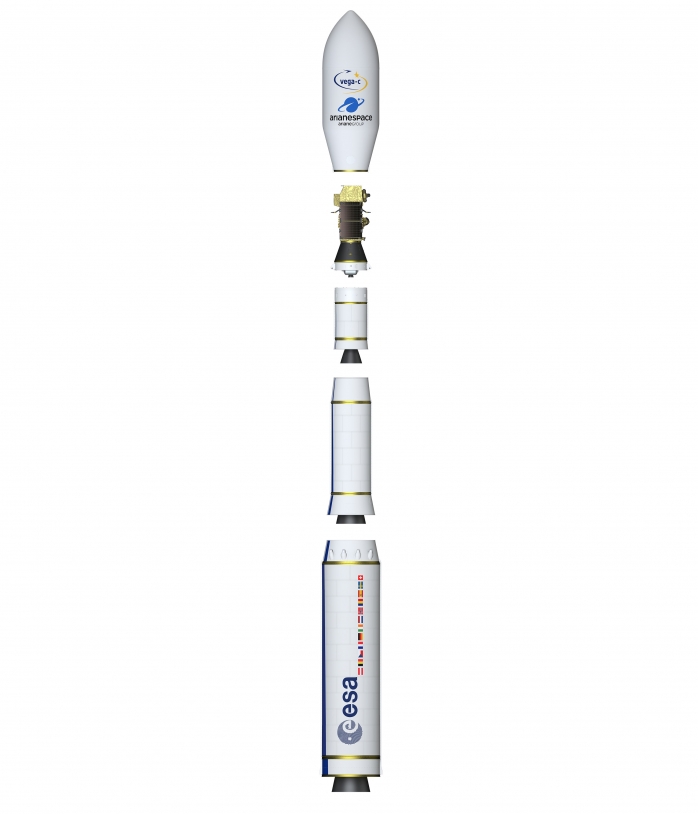Vega-C

Artist's view of the Vega C launcher Credits: © ESA
Vega-C is a new European launcher, the successor to Vega. Its maiden flight was successfully completed on July 13, 2022. This upgrade will allow for increased performance while reducing its operating costs.
With a payload capacity 1.5 times greater than that of Vega, Vega-C is capable of carrying up to 2.2 tonnes into polar orbit at an altitude of 700 km. This performance meets the needs of European institutional users without increasing the launch service. Like Vega, Vega-C is particularly well suited for the launch of Earth observation satellites, but also for the deployment of several satellites.
Vega-C is a light launcher, and is a European programme complementary to Ariane 6. The two launchers share a common component: the P120C, Vega-C’s first stage and Ariane 6’s booster. Its development is orchestrated and funded by the European Space Agency. The prime contractor for the launcher is the Italian manufacturer Avio. Thirteen States are involved in the development of the launcher: Austria, Belgium, the Czech Republic, France, Germany, Ireland, Italy, the Netherlands, Norway, Romania, Spain, Sweden and Switzerland.
Technical specifications
Vega-C is based on the existing Vega launcher: it is therefore a four-stage, single-body launcher.
The total length of Vega-C is about 35 metres with a lift-off mass of 210 tonnes: a significant increase compared to Vega’s current 130 tonnes.
Vega-C’s first stage is the P120C engine, also called the booster. Containing 142 tonnes of powder, it is the largest monolithic carbon fibre rocket engine ever built. Based on Vega’s P80, whose performance it considerably improves, it will deliver most of the thrust at lift-off. The P120C will also be used for Ariane 6’s boosters.
The second stage, the Zefiro-40, will provide propulsion for the launcher after the booster is jettisoned. It is an improvement over Vega’s Zefiro-23.
The third stage, the Zefiro-9, is identical to its equivalent used on Vega.
The upper stage, the AVUM, will provide propulsion for the launcher after the third stage burns out and separates. Capable of burning out and re-igniting several times, it can adjust its trajectory to inject the satellite with the utmost precision. It has a larger payload capacity than Vega.
The fairing protects the satellites from thermal, acoustic and aerodynamic stresses during ascent into the atmosphere.
launch facilities
Vega-C has been designed to lift off from the facilities currently used by Vega. This choice enhances the competitiveness of the launcher, which has immediately available infrastructures without design and construction costs.
The only exception is that a specific launch centre further away from the launch pad had to be built for Vega C, as this rocket’s booster is more powerful than that of Vega. It is located in the Technical Centre.
Learn more about the Vega launch complex and the Vega C launch centre

Launch history
| Date | Nom du vol | Charge utile | Orbite visée | Statut de la mission |
| 13/07/2022 | VV21 | LARES-2 + 6 Cubesats | Moyenne | Succès |
